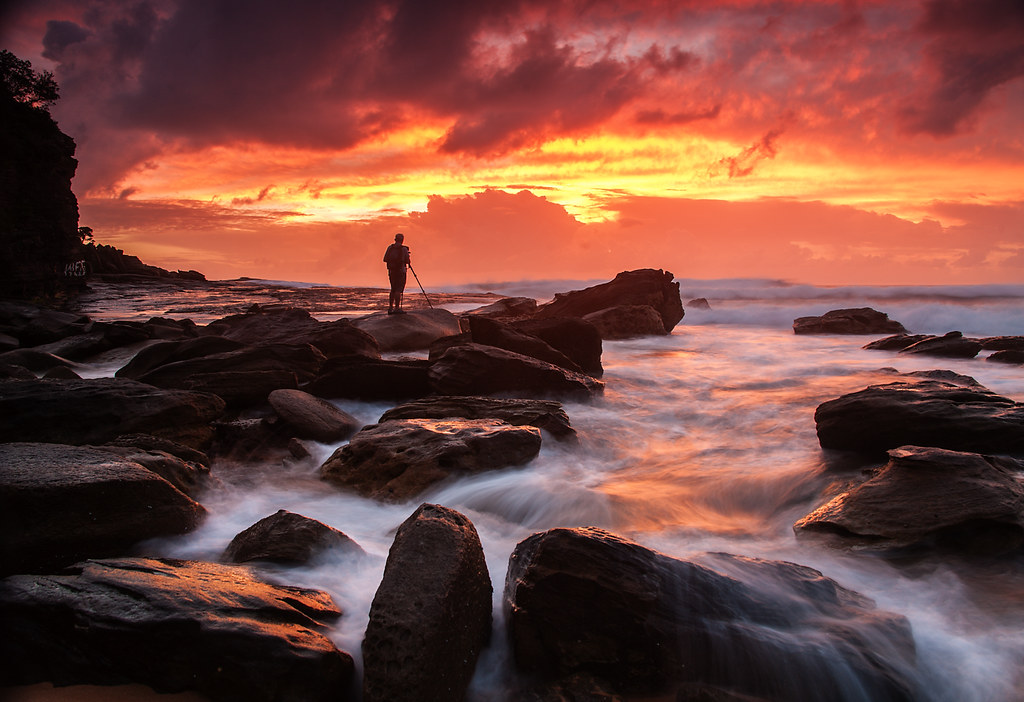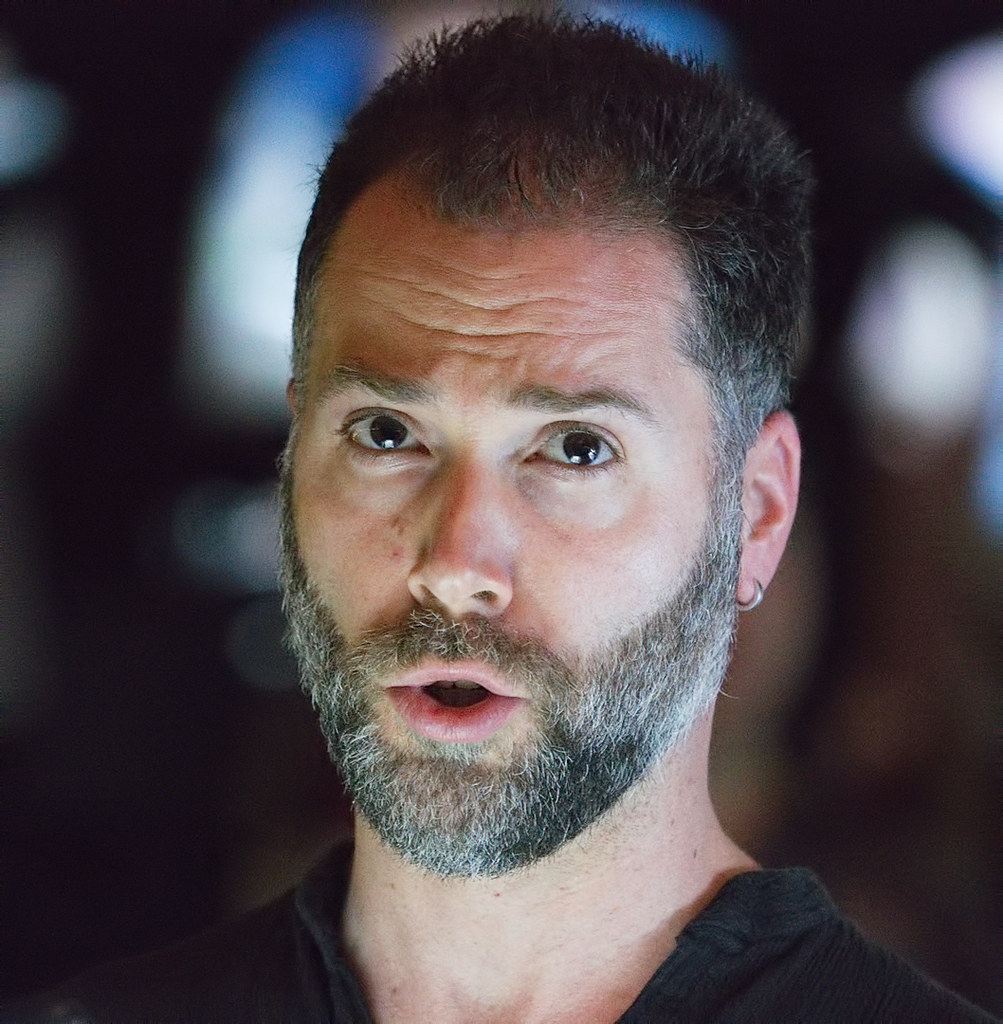My DSLR is the most expensive camera I have ever bought... actually.. it might be the ONLY camera I have ever actually 'bought'! (I've acquired most of them as 'junk' or gifts, or as swaps!)
Why on earth would I spend that sort of money, on a sophisticated computer controlled do-it-all for me wonder-box, to ignore it all, and try and use it like my old clock-work Zenit?!?!
If I want to make life hard for myself, I could just put a film in the Zenit, use that, and save a trip to the Gym into the bargain!
This 'Real Photographers Shoot in Manual' snobbery, boggles me, it really does.
Do you turn the AF off as well?
I rarely I use 'Manual' other than when I'm using old manual lenses the camera cant control the aperture on, or meter with, OR I am working in conditions where I know better than the camera what I want to do, and can make better settings to do that, than the computer-program in its 'brain' offers as its best guesses. And that's not very often. Because even then, most of the time, I can give the 'controller' a better clue for its 'best guess' using Aperture Priority and Shutter Priority semi-auto modes, and let the silicon bits worry about balancing the exposure for me.
Why turn 'off' all that 'expert' programming in the camera, and stop it suggesting exposure settings for you, to take three times as long to set the exact same settings 'manually', JUST so you feel like a 'Proper Photographer' pressing more buttons, and being able to say "I Use Manual!" Barmy, just Barmy, and little more than shear snobbery.
As to the Mjuii.. great little 35mm film camera. It was not a 'cheap' camera when it was new, either; it retailed for more than many entry level SLR's. It was the successor to the very successful Olympus XA series 35mm film cameras, introduced at a time when you didn't have to subscribe to fancy interchangeable lens camera systems, let alone more sophisticated still, Single-Lens-Reflex, system cameras, to consider yourself a 'proper' photographer.. you just had to care a bit about taking photos!
The original 'Clam-Shell' XA was actually a 'range-finder' camera; Non SLR cameras have a view-finder that looks through a separate lens to the one that takes the picture, and you would set the focus on them by looking at your subject, guessing how far away it was, then setting that distance on the focus control.. maybe getting a tape-measure out if you were getting a bit critical on the depth of focus at wider apertures.... OR you used a 'range finder' a little periscope device that was often an accessory that clipped on the hot-shoe, and you looked through that, twiddled a knob until the two images, from two separate ranging lenses in its view-finder were co-indent, and then read off the 'range', calculated by triangulation, on its scale, to set on the lens.
Olly XA had that 'in-built' and coupled to the lens, so you moved the lever to get focus, and then selected the aperture you wanted, it's 'coupled' meter then set the shutter speed for you, and you could dial in any 'compensation' you wanted via the ASA setting. It was a 'Pro-Grade' camera, much loved by candid ad street photographers, because it was also one of the smallest 35mm film cameras made; easy to use and very unobtrusive.
The 'consumer' level XA2, was slightly simplified for cost cutting, and lost the coupled range-finder, instead it was 'zone focus'; you selected an icon for 'near, middle or far subjects, and the Automatic Exposure selected an appropriate aperture and shutter speed; again compensation, if needed, could be dialled in via the ASA selector. That's the camera I ( actually have on my lap as I type! and) I have had since 1980, when, brand new, it was as expensive as Olympus's own rival 'entry level' OM10 SLR, which with a very good Zuiko lens, put 35mm 'quality' in your pocket, and made it as 'point and shoot' convenient as a 110 cartridge camera.
The Mjuii, came some years later, and added DX coding to save having to set the film speed, (and deny the potential to use film-speed setting to dial in exposure compensation); packed in a built in flash, where the XA's had a dedicated screw on item, and offered motored wind and rewind. It was very much more a 'consumer' camera; it wasn't as robust as the XA in my experience; but it was easy to use for the non enthusiast, and did deliver SLR rivalling quality in most situations. But yeah, it IS auto-everything, 'point and shoot'; that was the point of it;
and like the XA's it was small and discreet and a great 'candid' camera.
And it is a classic, putting that amount of 'automation', and giving the non-enthusiast masses that 'in-built' expert to make their settings for them; at a time when you either had to know a bit about what you were about to use a MUCH more 'manual' 35mm camera, whether range-finder or SLR, or had to put up with tiny frame, wobbly backing plate, 'instamatic' cartridge cameras, that often relied on small apertures and big DoF for focus and films exposure latitude and developing 'correction' in place of 'metering'!
I actually find it rather demeaning that because these high-end 'old' non SLR film cameras simply aren't SLR's that they are now often described as 'Lomo', lumped in with cheap chinese 'toy' cameras with plastic lenses, parabolic film traps and light-leaks, JUST because there aren't so many knobs to twiddle, and they are turning up for pennies in the charity &
second hand shops!
BUT....Go for it!!!!
Stick a film in and join us 'proper' (Daft old sod) photographers over in F&C who still appreciate a bit of silver halide, and where 'manual' is often the only option; a viewfinder exposure meter often a luxury, and some-times even just a view-finder is a bit of a bonus! My 120 roll-film 'folder' makes do with a wire frame 'machine gun sight' framing square!!!! And I have to focus by guestimate or tape measure and 'meter' by f-16 sunny rule!..
Now if you'll just excuse me I just have to get the changing bag out to try and untangle a strip of Ilford B&W that's snapped in the Camera!!!
Remind me again, why I bought a Digital camera?
Oh, yeah, NOT to make life so chuffin hard for myself, wasn't it? I keep forgetting....Mind you, at least I have stopped stabbing myself in the eye with digi-compacts, trying to look through view-finders they don't have, when I'm handed one! Still not sure what they hand me telephones for though...... at least I think they are telephones... I cant tell.. they don't have a 'dial' to dial any-one on them! Maybe they expect me to telephone a REAL photographer who only shoots in Manual

 It reminds me of the little single use film cameras. There is a certain pleasure to be got from shooting this way sometimes. It is so limited it becomes almost all about content and composition and seeing the light and gauging how the camera will meter. Anyone occasionally shoot this little totally automatic cameras? (I guess some phone cameras might fit this category)
It reminds me of the little single use film cameras. There is a certain pleasure to be got from shooting this way sometimes. It is so limited it becomes almost all about content and composition and seeing the light and gauging how the camera will meter. Anyone occasionally shoot this little totally automatic cameras? (I guess some phone cameras might fit this category)


 The photographer
The photographer Practice in the wet.
Practice in the wet. A soloist
A soloist